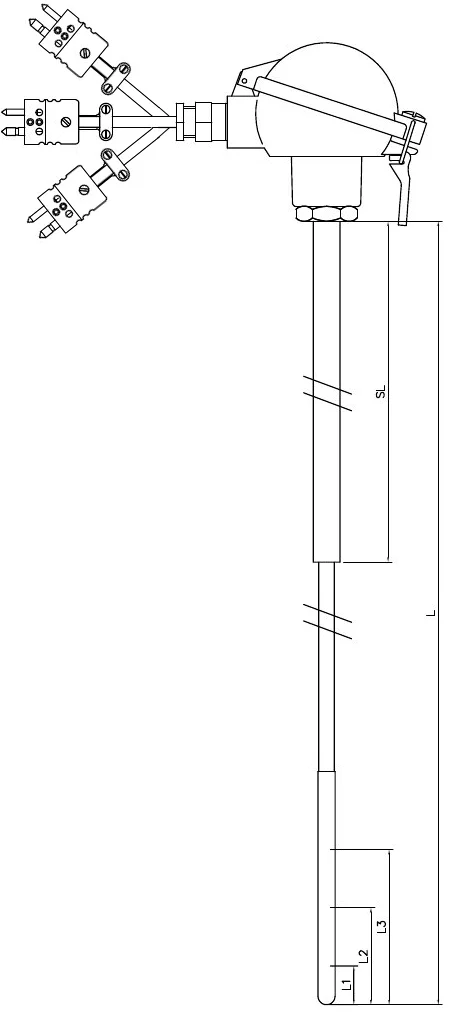What Are Triplex Thermocouples?
TL;DR – Quick Summary
A triplex thermocouple contains three separate thermocouple sensors within a single protective sheath. They are typically used to:
- Measure temperature at three different points along a process.
- Provide redundancy for critical temperature monitoring.
Common in high-temperature industrial applications such as glass furnaces.

Definition
A triplex thermocouple (also called a tri-level thermocouple) is a temperature sensor design where three individual thermocouple elements are housed inside one protective sheath.
How They Work
Each thermocouple element can have its measuring junction positioned:
- At different depths along the sheath – to monitor multiple temperature zones.
- At the same location – to provide redundancy in case one element fails.
The design follows the same operating principles as a standard thermocouple: two dissimilar metals joined at a junction produce a voltage proportional to the temperature difference between the junction and reference end.
Why Use Triplex Thermocouples?
1. Multi-Zone Measurement
In processes like glass melting furnaces or large reactors, temperature varies along the depth. Triplex thermocouples allow simultaneous readings from different levels.
2. Redundancy in Critical Processes
In safety-critical environments, having three sensors at the same point ensures continued measurement if one or two fail.
Common Applications
- Glass manufacturing furnaces – to monitor temperature at multiple melt depths.
- Chemical reactors – to track temperature gradients for process control.
- Metals processing – for multi-point heat treatment monitoring.
- Research and testing – where temperature distribution profiles are needed.
Advantages
- Single sheath simplifies installation compared to multiple separate sensors.
- Reduces space requirements in confined process environments.
- Offers higher data density for process control.
- Potential for improved safety with redundancy.
FAQ – Triplex Thermocouples
Q1: What’s the difference between triplex and duplex thermocouples?
A duplex thermocouple contains two measuring elements, whereas a triplex has three.
Q2: Can each sensor in a triplex thermocouple be a different thermocouple type?
Usually all three are the same type (e.g., Type K, Type S) for consistency, but custom designs are possible.
Q3: Do triplex thermocouples last longer?
They don’t inherently last longer, but redundancy means you can keep measuring even if one element fails.
If you want to order a temperature sensor or you are unsure exactly what you need, get in touch and we can help you.
